Berliner Magen Bitters Milwaukee

Embossed on one panel BERLINER MAGAN BITTERS CO. It was a product of the Zien Bros. Co. of Milwaukee and Duluth. This bottle has a tooled lip and dates from around 1900. It had a paper label that wrapped around three sides of the bottle. The front was in English, the left in German and the right in English.
Article: The Berliner Magan Bitters Co.
The Berliner Magen Bitters Company
By Peter Maas
There are a number of bottles and advertising pieces with the name "Zien" or "Berliner Magen Bitters" from Milwaukee, St. Paul and Duluth Minnesota, as well as from the west coast. Tim Wolter and I researched the topic to identify the connections among them. We found that several businesses and spin-off companies flourished for only about ten years just prior to prohibition, then disappeared like many similar businesses. Here is what we learned.
The Zien Brothers
Jacob D. Zien started in a liquor business in 1889 in Duluth, Minnesota when he opened a saloon with a man by the name of J. R. Duff. Not much is known about this business, except that after six years the partnership ended when Mr. Duff left the firm. A few years later the 1898 the city directory shows that Jacob's business had graduated from a saloon to a wholesale liquor dealer. A Duluth bitters bottle identifies the firm name as "Berliner Magen Bitters Company", although city directories list it as the J. D. Zien Co.
Around 1900 Jacob started a new venture with his brothers in Milwaukee while still living in Duluth. Jacob and his younger brother Isaac called their firm the "Zien Brothers Co." Their younger brother Louis worked as a shipping clerk and half-brother Morris was a traveling salesman. Isaac had come to the United States from Germany in 1882 and initially settled in Hampton, Iowa. Later he moved to Minneapolis, then back to Hampton to run a dry goods store for five years and finally to Milwaukee where he co-founded the wholesale liquor business about 1900. Isaac's son Solomon initially worked as a clerk for the firm.
It appears that Morris left the Zien Brothers Co. to start a new wholesale liquor business with William P. Berdie in Milwaukee in 1903. They called the company "Berdie & Zien". A dose glass from the firm advertises a brand called Alter Bismarck Bitters, but no bottles or other items have turned up yet. By 1907 Morris had left the firm, probably moving to Duluth. The business eventually became the Maryland Liquor Co. under different ownership.
Another Jacob Zien spin-off was created in 1903 in St. Paul called Metzger, Zien & Co. with Jacob as an absentee principal. Morris's son Izadore appears in a 1903 St. Paul city directory as a clerk, possibly looking after his uncle's interests. This partnership appears only in the 1903 directory. A jug advertising "Dr. Bopps Hamburger Stomach Bitters" exists from the Metzger, Zien & Co, as well as a similar one from the later Lewis Metzger Co.
In 1909, Jacob died at the age of 52 in Duluth leaving behind a successful business there. Jacob's half-brother Morris came from Milwaukee, and Morris's son Izadore came from St. Paul to take over the Duluth operation.
The Milwaukee branch of the Zien family businesses seemed to be the most prosperous of all. Zien Bros. grew steadily after opening and by 1907 had outgrown its original quarters at 300 N.Third Street. The company moved to a new location three blocks to the north, near the Schlitz brewery. Curiously, Isaac's wife Ella is listed as President of the Zien Brothers Co. from Jacob's death in 1909 until the firm closed. Isaac is listed a Vice President and son Solomon is listed variously as Vice President, Secretary, rectifier (blending whiskeys), "compounder" (mixing ingredients), and traveling salesman. Louis left the firm in 1911 to run a hotel in Milwaukee.
Solomon's son Herbert lives in Milwaukee. He remembers that Berliner Magen Bitters was the primary brand sold by the Zien Bros. Herbert recalls another popular product called "Rainbow-Luvit." It consisted of three liqueurs, each a different color, that came in a three part bottle. When poured into a glass they settled into layers, creating a rainbow effect. Although there were probably other brands associated with Zien Brothers, none have yet surfaced.
Like many liquor businesses, prohibition spelled doom for all of the ventures started by the Zien family. Probably the only family member who kept his ties to the liquor trade was Solomon, who after repeal worked as publisher of trade journals for the liquor and beverage industries until his death in 1968. These publications included the "Wisconsin Tavern News", the "Northwest Beverage Journal" and the "Wisconsin Beverage Journal." Solomon's son Herbert worked for his father and later became managing editor of the publications until his retirement.
Berliner Magen Bitters
Berliner Magen Bitters, which translates to "Berlin-style stomach bitters", had a German origin. A 1902 Zien Bros. brochure states that it was used for over 100 years and had hundreds of imitations, although advertising claims were often exaggerated, as they are now. It I possible that Berliner Magen Bitters was imported in bulk from Germany and bottled in Duluth, or Jacob could have distilled the bitters, since the firm advertised itself as both an importer and a distiller. Jacob probably bottled the bitters in Duluth for both the Milwaukee and Duluth locations. Both Zien Brothers in Milwaukee and Berliner Magen Bitters Co. in Duluth used identical bottles embossed with "Berliner Magen / Bitters Co." The paper labels are the same too except for the company name. The advertisements state that the bitters were available in bottle came in $1 size and a 50 cent size but no embossed or paper label bottles of the 50 cent size are known today.
An interesting similarity exists between this product and one by the same name sold by Sara B. Rothenberg of Oakland, California. In 1895 she registered a trademark for "Berliner Magen Bitters" with a logo that is very similar to the one later used by Jacob Zien. There are several possible explanations for the similarity. She may have later sold the rights to Zien. The Zien clan was very mobile and they may have crossed paths with Ms. Rothenberg. It is also possible that if indeed an original German product existed, both logos were derived from a similar German product. Sara states that her trademark is used in commerce with the Empire of Germany, which suggests that she imported the bitters. Another possibility was that the names originated independently, despite the trademark registration, since trademark enforcement was lax at the time, and especially because the products sold in different markets.
The Berliner Magen Bitters brand appeared to be very successful. Like most bitters of the time, Zien promoted them as having medicinal value for stomach troubles, women's problems, constipation, and liver and kidney ailments (which is interesting considering its 23% alcohol content).
Berliner Magen Bitters were sold in the upper Midwest, including Wisconsin, Minnesota, Iowa, Nebraska and South Dakota, leveraging of the large number of German immigrants living in this region. Herbert remembers his father's description of how products were sold. Solomon traveled from town to town, usually by train. He rented a horse and buggy and recruited a local person who knew the farmers in the area to travel with him. They went to farms and Sol made his pitch and took orders. Sol only had samples with him. The product was delivered by mail.
At least five different Berliner Magen advertising dose glasses exist from Milwaukee and one from Duluth. They used several advertising slogans, among them: "The road to health is assured by taking.", "Preserve your health with.", and "Try them and convince yourself". The dose glasses provide evidence that the Berliner Magen brand was sold at least from 1903 thru 1909, because varieties exist under both the Zien Bros. and for Zien Bros. Co., which was the firm's new name as of 1909.
My thanks to several people who contributed research information for this article: Tim Wolter, Herbert Zien, Fred Wolter, and Patricia Maus.








